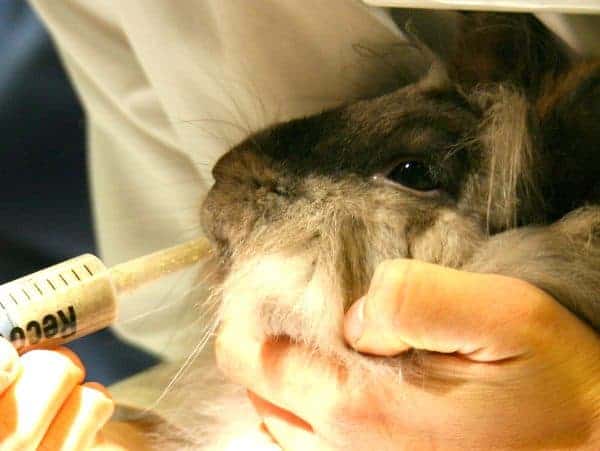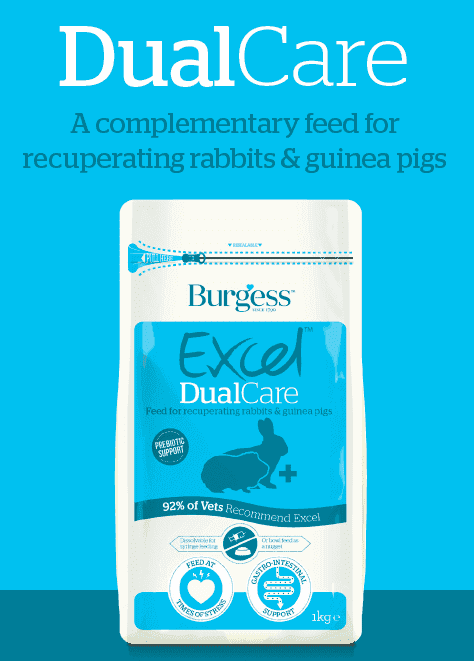Where to Buy a Syringe to Feed Rabbit

Syringe feeding rabbits
Critical care in small mammals and exotics has changed and progressed a long way in recent years. There are some excellent products on the market that allow animals of all species to be cared for in times of need.
Fluids and critical care nutrition are fundamental to allowing animals recover from stress, illness and surgery.
Rabbits are prone to developing gut stasis and supplementary nutritional support goes a long way to helping prevent or reinstate normal motility.
It's vital that you check its hydration status. Dehydration must be corrected and the animal must be at normal body temperature.
So what can you syringe feed?
Emeraid – produced by Lafeber, is specially formulated and produced for use in critically ill patients. It comes as a powder, which is mixed with water to be syringe fed. Available for carnivores, herbivores and omnivores, you'll always find a combination that will work for any species. Its key benefit is that it provides the critical care nutrition in a simplified form, allowing essential nutrients to be absorbed with minimal effort. It's usually recommended that you feed it as the sole source of nutrition for no longer than 5-7 days.
Excel DualCare – produced by Burgess Pet Care. A specially formulated diet which when mixed with water, can be easily syringe fed to both rabbits and guinea pigs at times of stress and recovery. It contains long chain fibre, pre-biotics, methionine, tryptophan and Vitamin C – all essential when looking for nutritional and GIT support. As Dualcare contains long chain fibre, it can be fed for long-term support of fibrevores - rabbits and guinea pigs in particular.

How to syringe feed in 10 easy steps
- Prepare the product – if you are using Emeraid or Dualcare, check the mixing instructions, and work out the volume of food required.
- Use the best syringe – there's nothing worse than trying to syringe feed an animal through a sticking syringe. A fresh syringe with a wider luer end will always work best. 5ml and 10ml syringes are easier to handle than 20ml syringes.
- Somewhere quiet and comfortable –choose a room that is away from the noise and distractions of the kennels. A rabbit or small pet that is calm and relaxed is more likely to respond to assisted feeding.
- Wrap in a towel – place your patient onto a towel and gently wrap the towel under its chin, then fold over the body from both sides to create a swaddled comfortable patient.
- Keep your patient comfortable – don't stress your wrapped patient by lifting or holding awkwardly. Keep them in a normal position on your lap or on the examination table and gently raise the chin a little.
- Insert the syringe – gently place the luer end between the lips, behind the incisors and in front of the cheek teeth.
- Check swallowing – only introduce a small amount of food at first, and make sure you see that the food is swallowed.
- Go slowly – continue feeding small volumes of food (1ml at a time), ensuring its not just being held in the mouth. Don't rush.
- Be patient – feeding by syringe can be messy and frustrating. It's important to stay calm and persist.
- Flush afterwards – when you've finished feeding, feed a final small volume of water. This helps to ensure all the food is cleared from the mouth.
Watch a video
The link above takes you to a very informative video available on Youtube. It's been made by Dr. Laurie Hess and Sarah Inglis from the Veterinary Center for Birds & Exotics.
We use cookies on our website to give you the most relevant experience by remembering your preferences and repeat visits. If you're happy with that click "Accept", and all cookies will be applied. Otherwise, click "Reject" and we'll only apply cookies that are absolutely necessary.
Where to Buy a Syringe to Feed Rabbit
Source: https://www.burgesspetcare.com/blog/rabbits/syringe-feeding-rabbits/